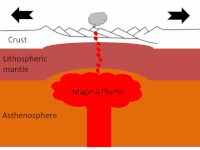
Photo from wikipedia
Expansion of fresh and sea-ice loaded surface waters from the Arctic Ocean into the sub-polar North Atlantic is suggested to modulate the northward heat transport within the North Atlantic Current… Click to show full abstract
Expansion of fresh and sea-ice loaded surface waters from the Arctic Ocean into the sub-polar North Atlantic is suggested to modulate the northward heat transport within the North Atlantic Current (NAC). The Reykjanes Ridge south of Iceland is a suitable area to reconstruct changes in the mid- to late Holocene fresh and sea-ice loaded surface water expansion, which is marked by the Subarctic Front (SAF). Here, shifts in the location of the SAF result from the interaction of freshwater expansion and inflow of warmer and saline (NAC) waters to the Ridge. Using planktic foraminiferal assemblage and concentration data from a marine sediment core on the eastern Reykjanes Ridge elucidates SAF location changes and thus, changes in the water-mass composition (upper ˜200 m) during the last c. 5.8 ka BP. Our foraminifer data highlight a late Holocene shift (at c. 3.0 ka BP) in water-mass composition at the Reykjanes Ridge, which reflects the occurrence of cooler and fresher surface waters when compared to the mid-Holocene. We document two phases of SAF presence at the study site: from (i) c. 5.5 to 5.0 ka BP and (ii) c. 2.7 to 1.5 ka BP. Both phases are characterized by marked increases in the planktic foraminiferal concentration, which coincides with freshwater expansions and warm subsurface water conditions within the sub-polar North Atlantic. We link the SAF changes, from c. 2.7 to 1.5 ka BP, to a strengthening of the East Greenland Current and a warming in the NAC, as identified by various studies underlying these two currents. From c. 1.5 ka BP onwards, we record a prominent subsurface cooling and continued occurrence of fresh and sea-ice loaded surface waters at the study site. This implies that the SAF migrated to the southeast of our core site during the last millennium.
Journal Title: Boreas
Year Published: 2018
Link to full text (if available)
Share on Social Media: Sign Up to like & get
recommendations!